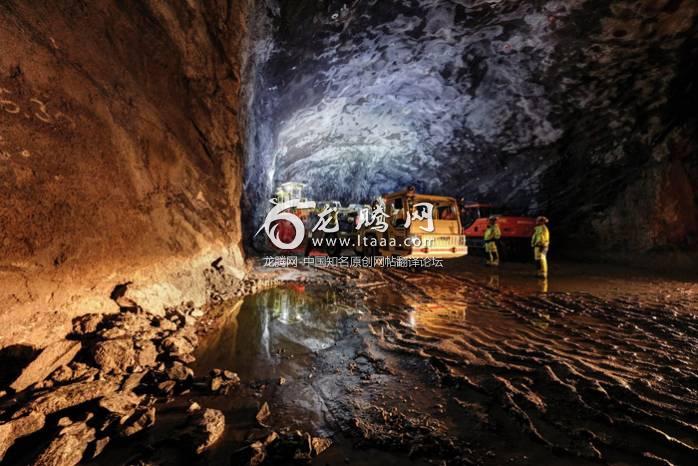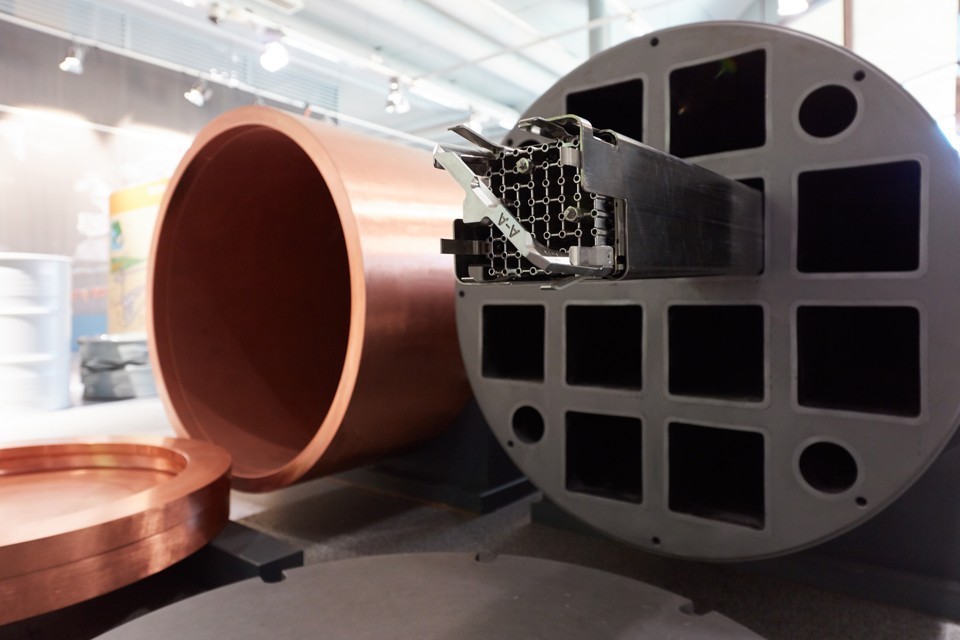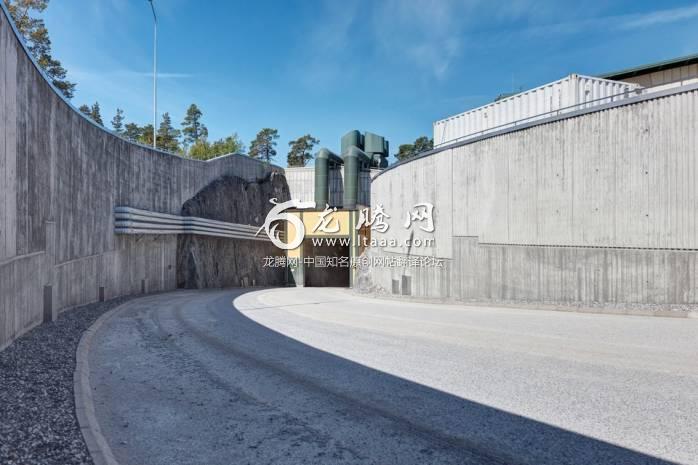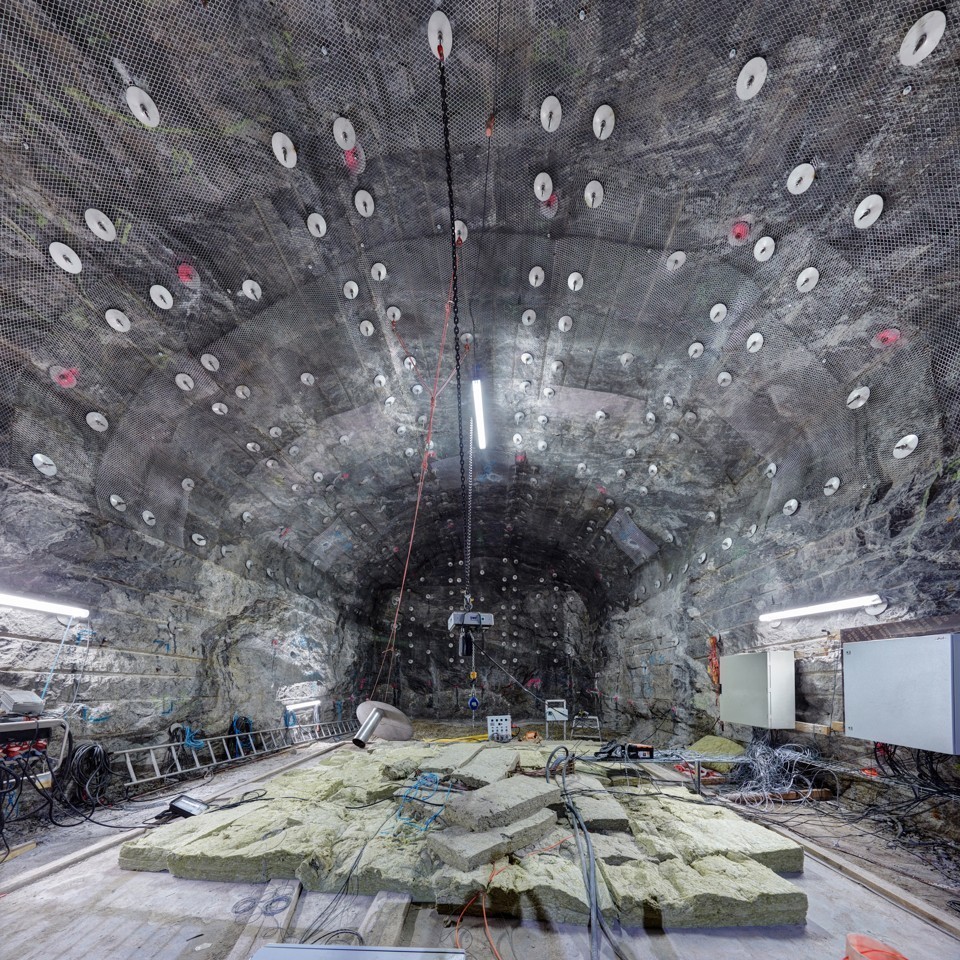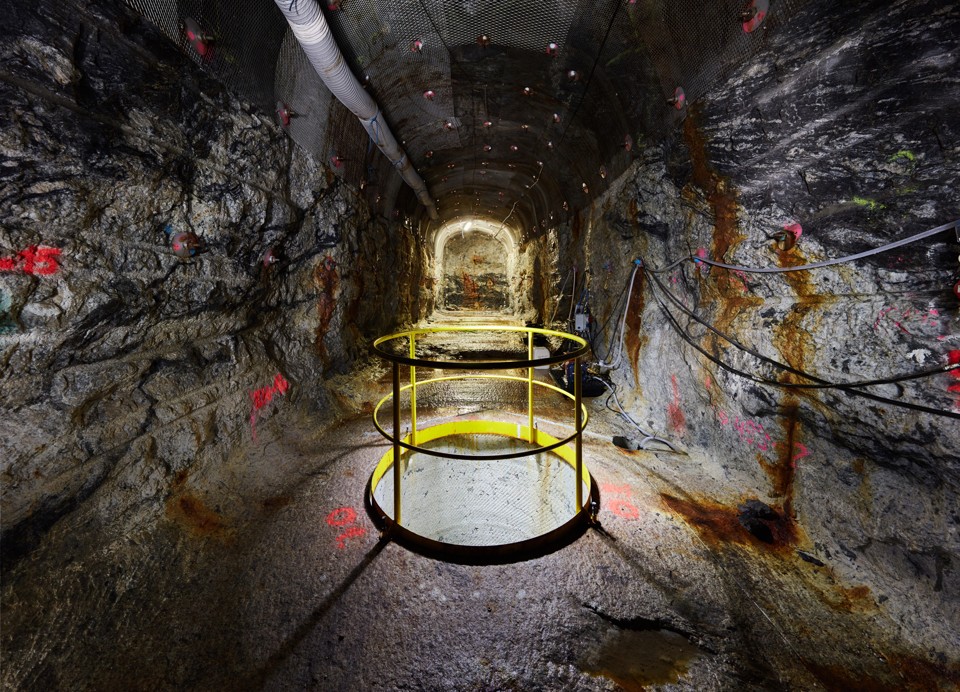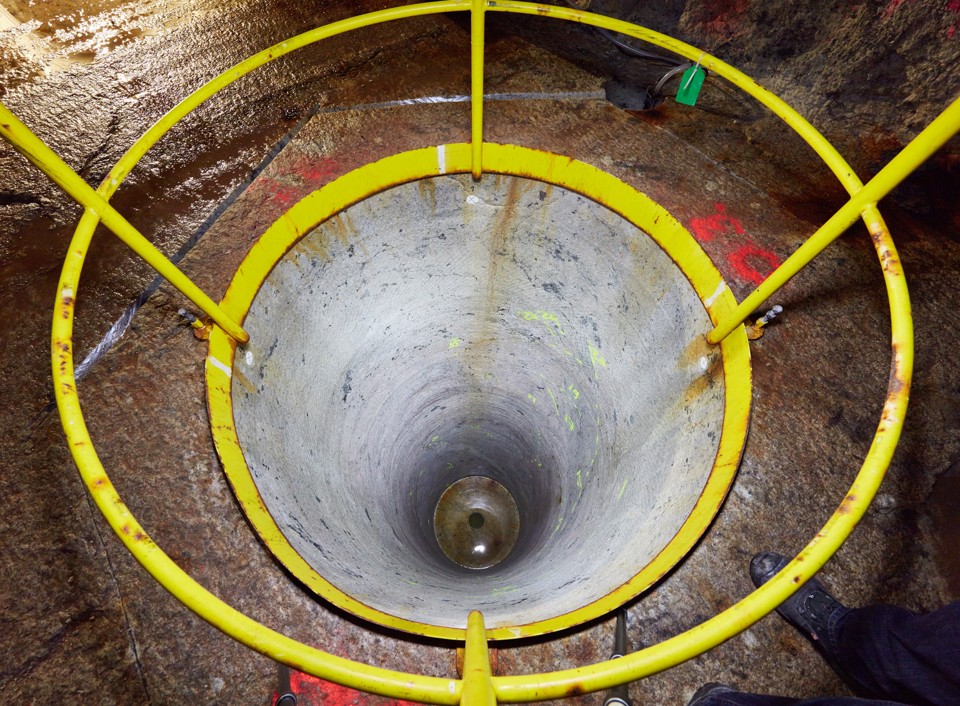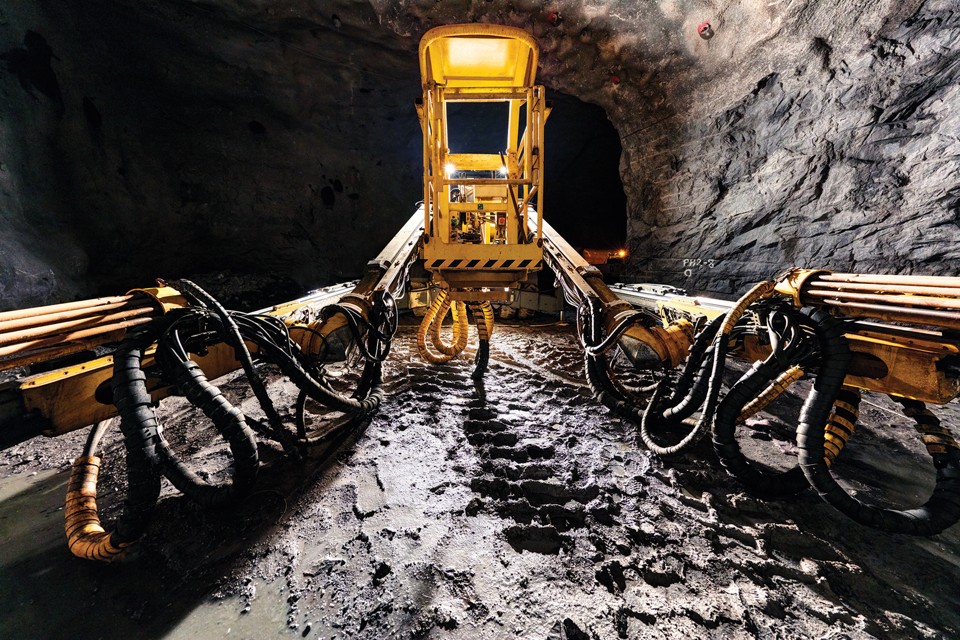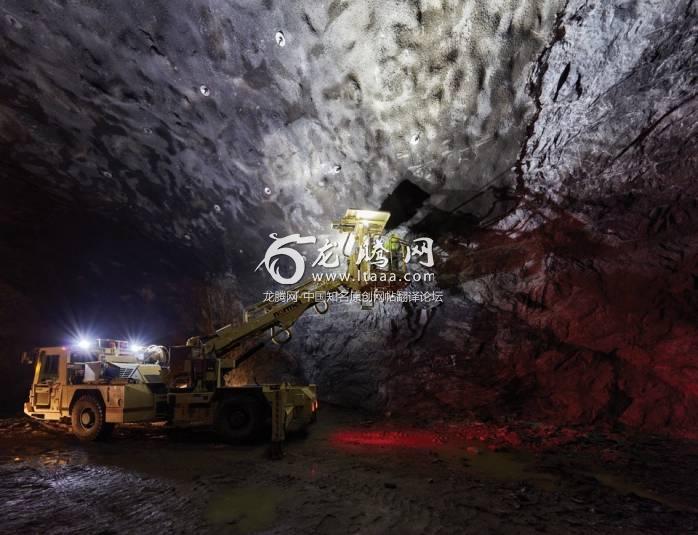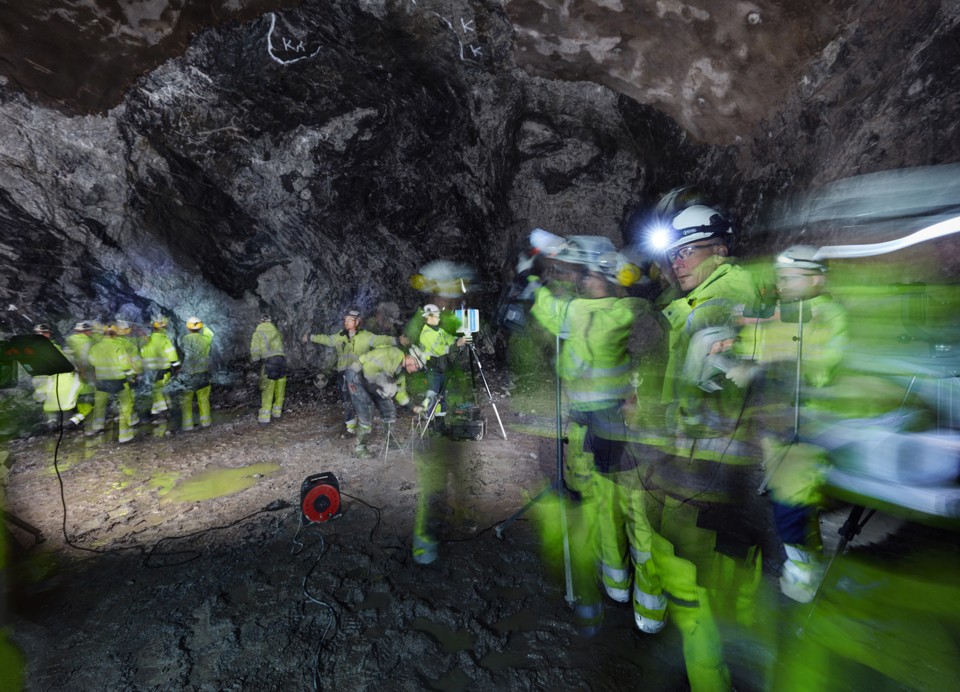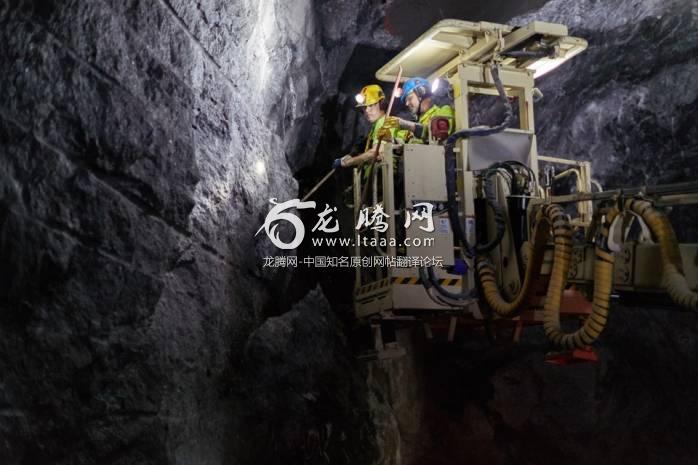大地之下 [美国媒体]
深埋在波罗的海的一个岛屿地下,世界上第一个永久核废料贮蔵所已接近完工。如果计划进行顺利,未来几代人可能不知道那儿有一个核废料库。
What Lies Beneath
大地之下
Buried deep under an island in the Baltic, the world’s first permanent nuclear-waste repository is nearing completion. If all goes according to plan, future generations may not know it’s there.
深埋在波罗的海的一个岛屿地下,世界上第一个永久核废料贮蔵所已接近完工。如果计划进行顺利,未来几代人可能不知道那儿有一个核废料库。
In 1980, a 29-year-old Finnish geologist named Timo Äikäs accepted a huge responsibility: He joined a team in charge of finding a way to permanently store his country’s growing stockpile of nuclear waste.
1980年,一名29岁的芬兰地质学家Timo Äikäs接受了一项重大责任:他加入了一个团队,负责寻找一种永久贮存国家日益增长的核废料的办法。
Doing so would require Äikäs and his colleagues to think far, far into the future. They would need to build something to last as long as the spent fuel from nuclear-power plants remains dangerous—between 100,000 and 1 million years. Considering that the pyramids are a mere 4,500 years old, this is an essentially unimaginable span.
这份工要求Äikäs和他的同事们考虑长远的未来。他们要建造的东西必须十分持久,直到核电站的核废料衰减到安全程度——介于10万到100万年之间。考虑到金字塔也只不过有4500年历史,这是一个根本无法想象的时间跨度。
When Äikäs began working on the project, repositories were already on the drawing boards in the United States, Sweden, Germany, and elsewhere. The Finns figured that other countries would do the early research and development, and Finland could copy their best ideas. Indeed, the plan Äikäs and his team settled on was borrowed from Sweden, which sits on the same slab of bedrock that Finland does.
当Äikäs着手这个项目时,美国、瑞典、德国等地方已经开始筹备贮藏所。芬兰人认为其他国家将进行早期研发,芬兰可以复制他们的成功经验。事实上,Äikäs及团队采取的计划是参考瑞典的,他们选择的基岩与瑞典一样。
(基岩(bedrock),陆地表层中的竖硬岩层。一般多被层层覆盖,埋藏深度不一,少则数米到数十米,多则数百米。可作大型建筑工程的地基)
Almost 40 years later, Finland is the only country in the world that has a permanent nuclear-waste repository under construction. The projects Äikäs had assumed would be completed long before Finland’s have faltered on nimby politics. (Around the world, an estimated 250,000 tons of spent nuclear fuel are stored in temporary facilities that are showing their age, and accidents are surprisingly common; several have occurred at U.S. facilities in the past few years alone. Accidents risk exposing people and the environment to radiation, and cleanup costs can run into the billions of dollars.) “Our original strategy—to follow others—has failed,” Äikäs says. Nevertheless, the facility he spent his career planning, known as Onkalo—which means “cave” or “hiding place” in Finnish—is on the verge of completion.
然而,近40年之后,芬兰成了世界上唯一还在建设永久核废料贮藏所的国家。根据Äikäs的设想,这个项目早就应该完成了——早在芬兰陷入邻避政治之前(邻避综合症,指强烈反对在自己住处附近设立任何有危险性事物,例如反对在本地建造垃圾焚烧发电厂)。(据估计,全世界有25万吨的核废料储存老旧的临时设施中,事故频发;仅过去几年,美国设施就发生了数起事故。事故使人群及环境处在辐射的危险之下,而清理成本可能高达数十亿美元。)“我们原本的策略——参考他人——失败了,” Äikäs 说,虽然如此,这项花了他毕生心血的计划——Onkalo,芬兰语洞穴或隐藏处的意思——已经接近完工了。
The facility’s entrance is nestled in an evergreen forest on Olkiluoto, a sparsely inhabited island off Finland’s western coast; three nearby nuclear reactors are just out of view, hidden by the surrounding trees. Beyond what looks like an oversize garage door, a tunnel descends nearly 1,500 feet into the bedrock. Eventually, 137 additional tunnels will fan out from the bottom. When the facility is up and running, spent fuel will be packed into 25-ton canisters made of cast iron wrapped in pure copper. The canisters will be stored in specially carved chambers sealed with bentonite clay (the active ingredient in kitty litter), which swells on contact with water.
该设施的入口坐落在Olkiluoto一处常绿森林里,这是芬兰西海岸一座人烟稀少的小岛;茂密的树木遮住了附近的三个核反应堆。在看起来像一个超大的车库门之下,一条隧道向下延伸了近1500英尺(约460米),直达基岩。按计划,最后将有另外137条隧道从底部散开。当设备启用时,核废料将被装入容量为25吨的生铁容器中,外面用纯铜包裹密封。这些储藏罐将被放入凿出的石室中,室口用膨润土密封(膨润土是猫砂的主要成分,遇水膨胀)。
Onkalo’s design is deceptively simple. The near-seamless local bedrock, a type of rock called gneiss, is geologically stable and keeps water out. The bentonite clay will absorb any water that does seep in. The groundwater deep below the surface has a low oxygen content, which makes it less corrosive. And because copper is one of the most stable substances on Earth, geologists say it would take millions of years for groundwater to eat through the canisters. By then, the radioactive isotopes inside will have degraded to a form that no longer poses a threat to the environment.
Onkalo 的设计看起来很简单,却很精妙。当地这种近乎无缝的基岩是一种片麻岩,具有很强的地质稳定性,可以隔绝水分,防止污染地下水。而膨润土将吸收任何渗出的水份。深层地下水含氧量较低,因此腐蚀性不强,再加上铜是地球上最稳定的物质之一,地质学家说,地下水要用数百万年时间才能腐蚀储藏罐。到那时,里面的放射性物质已经衰减到了对不再威胁环境的状态。
Planners have also devoted lots of thought to the question of how to warn our distant descendants, “Don’t dig here!” That’s because if humans still inhabit the Earth in 100,000 years, they probably won’t be able to read our writing. After all, just 10,000 years ago humans were roaming the planet in small groups of hunter-gatherers and using stone tools; we’re baffled by Stonehenge, which is only 5,000 years old. One hundred millennia from now, the human race might be totally unrecognizable.
“不要挖这里!”——规划者们还花了大量时间,思考如何警告我们遥远的后人,因为如果10万年后人类仍然居住在地球上,他们可能无法阅读我们的文字。毕竟,就在一万年前,人类还在以一群群狩猎者的形式在地球上漫游,还在使用石器;我们对只有5000年历史的巨石阵感到困惑。而十万年后,现在人类的信息可能已经完全无法识别了。
The Finns have taken a simpler—and much more Finnish—tack: At least for now, they’ve decided against putting any kind of warning sign on the site at all. “If we mark it, we’d most likely invite people to look and see what’s down there,” Äikäs says. Instead, they’ve designed Onkalo to be as inconspicuous as possible.
芬兰人采取了一个更简单、更巧妙的策略:至少现在,他们决定不放置任何警示信号。“如果我们标记它,很可能等于我们在邀请人们来看看下来有什么,”Äikäs说。相反,他们将Onkalo 设计得尽可能不显眼。
Äikäs says he purposely chose a location where the boring bedrock wouldn’t interest future prospectors looking for metal, ore, or oil deposits. As the tunnels are packed full, they will be backfilled with absorbent clay blocks. Sometime in the early 2100s, the repository will reach capacity. Once that happens, it should require no oversight or management, no guards or electricity. One day, it will likely be covered by the surrounding forest. A few hundred years from now, Onkalo may be all but forgotten.
Äikäs说,他有意选择了一处平凡的、价值不高基岩,不会吸引未来寻矿者前来找寻金属、矿石或石油。一旦。预计贮藏所将在22世纪早期达到容量上限,此时隧道将被黏土回填封死,这样应该就不需要监视或管理,也不需要警卫或电力。有一天,它很可能会被周围的森林覆盖。几百年之后,Onkalo可能已经被彻底遗忘了。
The Finns avoided the nimby problems that have stalled other projects by garnering consensus from the outset. Nearby communities were granted veto rights during the planning process. Äikäs and his team at Posiva, the company in charge of building the facility, spent years organizing town halls, giving tours of mine shafts, and patiently answering questions about the potential risks of a direct meteor strike or future ice age.
芬兰人避免了困扰其它类似项目的邻避问题。在规划阶段,附近社区就获得了否决权。Aikas和他的团队,以及负责建设的公司,花了数年的时间组织市民参观矿井,耐心地回答问题,例如如何应对未来冰河期的陨石撞击风险。
Äikäs retired in 2014. Today, Ismo Aaltonen, another young Finnish geologist, is shepherding Onkalo through the final phases of construction and preparation. Aaltonen’s colleagues are already planning final practice runs of the disposal procedure, with real canisters and components but no spent fuel, for 2022.
2014年,Äikäs退休了。今天,另一位年轻的芬兰地质学家Ismo Aaltonen正在带领Onkalo进入最后阶段的建设和准备。Aaltonen的同事们正使用真正的、但没有核废料的罐子和部件,进行最后阶段的模拟。
If the practice runs go well, Aaltonen expects to start filling the tunnels with radioactive waste by 2024. It’ll be up to his successors, or rather their successors, to complete the task a century or more from now. “I hope I’m not retired when we start disposal,” he says. “But I’m sure I’ll be dead when we’re finished.”
如果模拟情况良好,Aaltonen预计将在2024年开始填装放射性废料。之后就要看他的——更确切的说是他们的继任者了,接下来一个世纪或更长的时间里,将会有一代又一代的人接力完成这项任务。“我希望当设施开始运行的时候,我还没退休,”他说,“但我确定当计划完成时,我已经死了。”
Spent nuclear-fuel rods will be encased in cast-iron canisters with a shell made of pure copper, which is extremely resistant to corrosion. The shell is almost two inches thick—equal to a little more than 32 stacked pennies
核废料棒将被放置在生铁罐里,并由纯铜外壳包裹,非常耐腐蚀。这个外壳差不多有2英寸厚(约5厘米)
Beyond Onkalo’s entrance, a tunnel extends nearly 1,500 feet below the surface. Planners expect to begin storing radioactive waste here by 2024. In the U.S., local opposition to a repository at Yucca Mountain, in Nevada—once expected to open in 2017—helped derail the project after billions had already been spent on an exploratory tunnel and geological surveys.
Onkalo入口。规划者预计将在2024年开始填装放射性废料。而在美国,当地人的反对使得位于内华达州的尤卡山的类似设施停滞不前,该设施本预计于2017年投入使用。在此之前,他们已经投入了数十亿美元用在隧道勘探和地质调查上。
Geologists and engineers working for Posiva, the Finnish company responsible for building the facility, use chambers like this to measure groundwater seepage in the local bedrock and to gather other data.
地质学家和工程师们使用这样的房间来测量基岩的地下水渗流情况,并收集其他数据。
Canisters full of nuclear waste will be welded shut and then lowered into storage shafts as deep as 26 feet. The shafts will then be filled with bentonite clay, a substance that absorbs water.
装满核废料的罐子将被焊封,然后沉放到26英尺深(约8米)的存储井中。之后竖井将用膨润土填充,这是一种吸水物质。
A drill used to place blasting charges. The geologist Ismo Aaltonen likens the underground construction work to mining, with one important difference: Workers will still be active underground a century or more from now.
用于放置炸药的钻头。
As the repository is filled, operators will use remote-controlled machinery to backfill the tunnels and seal them off. One day, the entire facility may be covered by the surrounding forest and—perhaps—forgotten forever.
当贮藏所填满时,操作人员将使用遥控机械回填这些隧道,并将它们永久封存起来。某一天,整个设施可能被周围的森林覆盖——也许——被永远遗忘掉。
Engineers use 3-D scanners to measure the tunnels after drilling and blasting.
工程师使用3D扫描装置测量隧道。
For safety, the tunnel roofs are covered in spray concrete and loose rocks are pried from the walls after blasting.
为了安全起见,爆破之后,隧道顶上松动的岩石被移走,并喷上混凝土。
版权声明
我们致力于传递世界各地老百姓最真实、最直接、最详尽的对中国的看法
【版权与免责声明】如发现内容存在版权问题,烦请提供相关信息发邮件,
我们将及时沟通与处理。本站内容除非来源注明五毛网,否则均为网友转载,涉及言论、版权与本站无关。
本文仅代表作者观点,不代表本站立场。
本文来自网络,如有侵权及时联系本网站。
阅读:
上一篇: 中朝关系受损 [美国媒体]
图文文章RECOMMEND
热门文章HOT NEWS
-
1
Why do most people who have a positive view of China have been to ...
- 2
- 3
- 4
- 5
- 6
- 7
- 8
- 9
- 10
推荐文章HOT NEWS
-
1
Why do most people who have a positive view of China have been to ...
- 2
- 3
- 4
- 5
- 6
- 7
- 8
- 9
- 10
